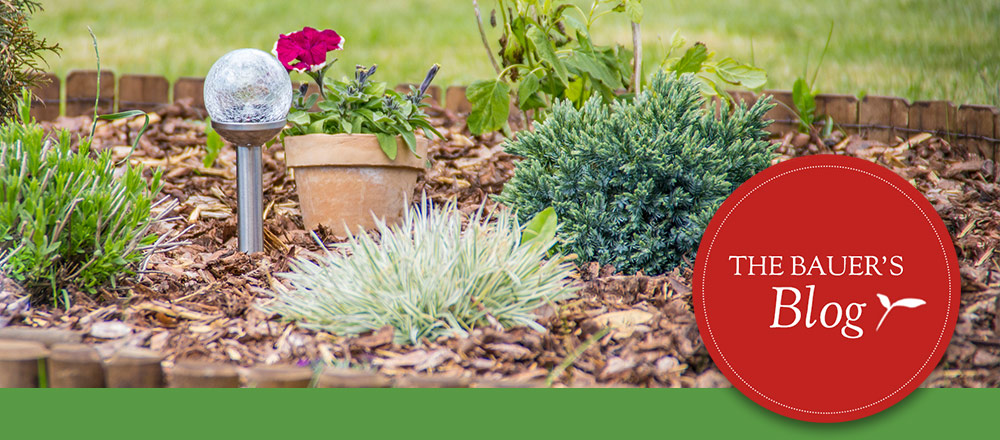Mulching is one of those amazing gardening techniques that requires a little bit of effort at first, but ends up saving you a ton of time and energy down the road. If you’re unfamiliar with mulching, it’s basically the application of a thick layer of loose material over a garden bed to cover bare soil. It might not sound especially advantageous at first, and you might be wondering why on earth you’d want to shield soil from the elements, but the benefits of mulch are plentiful. Read on to find out why mulching is a must for any avid gardener, and which mulching materials are the best to use.
The Benefits of Garden Mulch
Creating a barrier between your garden’s soil surface and the surrounding elements will do a lot of good for your plants. Think about the forest floor — trees are accustomed to their leaves falling and piling up, creating that extra protective layer. The area surrounding deciduous tree trunks is a great spot to apply mulch because it mimics their natural environment. So, what exactly happens when mulch is applied?
Moisture is retained in the soil. When the sun isn’t beating down on your garden soil all day, the water evaporates much slower. This means more hydration for your plants, and less of a need for you to frequently water.
Heat gets locked in around your plant roots. We’re no stranger to cold temperatures here in Minnesota, and neither are our perennials. Applying mulch will help protect them from freezing and keep them snug while they lie dormant in winter. Heat-loving plants will thrive with much more ease when mulch is there to hold in that extra warmth. If a sudden unexpected cold spell hits, they’re less likely to sustain significant damage.

Weeds don’t stand a chance against mulch. Another benefit to blocking the sun from hitting the soil is depriving those pesky weeds of the sunlight they need to sprout. Plus, when the soil surface is covered, it’s much harder for weed seeds to spread themselves around and take root.
When organic mulch breaks down, your plants get more food. Most mulch is made from natural, biodegradable materials. When it starts to decompose, it sends a healthy dose of nutrients and good bacteria into the soil for plant roots to soak up. At the end of autumn, if your mulch is starting to soften up, just let it sit and don’t clean it up until next spring. All of that extra nutrition is valuable for plants entering dormancy. When they come back the following spring, they’ll have loads of extra energy to grow lush and beautiful.
Plus, it looks pretty nice too. Lots of mulches are actually quite aesthetically pleasing to your landscape. Depending on what kind of color scheme you’ve got going in your garden, a tinted mulch could complement that palette beautifully. Instead of big patches of dirt poking out from between your flowers and shrubs, a subtly colorful layer of shredded material can look really polished.
Now that you know why mulch is so valuable for gardeners, it’s time to start thinking about what kind of mulch material to purchase. Not all mulches are created equal! However, we do have some particular favorites made of all-natural materials, in a variety of colors and textures.

The Best Mulch Materials for Gardens and Trees
While some places carry mulches made from non-biodegradable materials like old tires, or chemically-treated, dyed woods, we recommend natural alternatives. Keeping things natural and organic provides many more nutritional benefits for your plants. Here are our top picks for natural garden mulches.
Bark Mulch: Nuggets or shreds of tree bark have a gorgeous natural multi-tonal color palette that will blend perfectly with any garden landscape. We carry bark mulch chunks in several different sizes, so visit the garden center to see which style suits your preferences!
Cedar Mulch: The smell of shredded cedar is woody and pleasant, and it looks pretty lovely too. Thinly shredded cedar mulch is nice and airy, so it’s good for gardens full of more delicate flowers and plants. Larger chips of cedar are good for layering around the bases of trees and shrubs to help lock in heat for the roots— just make sure not to pile it up onto the trunk base, as that could promote rotting. Keep the layer nice and evenly spread, and you’ll be in the clear.

Cypress Mulch: This ever-popular wood mulch material is quite easy on the wallet, so you can get lots of bang for your buck with cypress tree shreds.
Red Mulch, Black Mulch, and Other Popular Tints: We carry a wide variety of different wood mulches treated with natural dyes that are earth-friendly and pet-friendly. Red and black are commonly used in commercial spaces, but we also carry mulches in other gorgeous shades like amber and chocolate.
Straw Mulch: If you’re concerned about conserving forests and don’t want to resort to using shredded wood products in your garden, straw mulch is a great option that gives a quaint, country ranch vibe to your backyard. Our EZ Rhino line of straw mulch is a fabulous option.
Now that things have warmed up and the growing season is upon us, it’s the perfect time to lay down some mulch! Visit Bauer’s this week, and our experts will be happy to assist you in choosing the perfect color and material to make your garden look like something out of a magazine.







Leave A Comment